How To Open Documents On Windows 10
Lesson 3: Working with Files
/en/windowsbasics/navigating-windows/content/
Working with files
Understanding how to piece of work with files and folders is an important function of using your computer. Once y'all understand how files and folder work, you'll use them all the time. In this lesson, nosotros'll evidence you the absolute basics of working with files, including how to open files, move your files into folders, and delete files.
Watch the video below to learn more nigh using files and folders in Windows.
What is a file?
There are many dissimilar types of files you tin use. For instance, Microsoft Word documents, digital photos, digital music, and digital videos are all types of files. Yous might even think of a file every bit a digital version of a real-world thing y'all can interact with on your computer. When you utilize dissimilar applications, you'll ofttimes be viewing, creating, or editing files.
Files are normally represented by an icon. In the prototype below, you can meet a few different types of files below the Recycle Bin on the desktop.
![]()
What is a folder?
Windows uses folders to help you organize files. Yous tin put files inside a folder, just like yous would put documents inside a real folder. In the image below, you can run into some folders on the desktop.
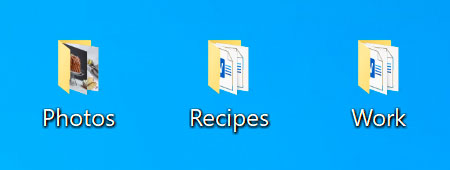
File Explorer
Yous can view and organize files and folders using a congenital-in application known as File Explorer (called Windows Explorer in Windows seven and before versions).
To open File Explorer, click the File Explorer icon on the taskbar, or double-click any binder on your desktop. A new File Explorer window will appear. At present you're ready to first working with your files and folders.
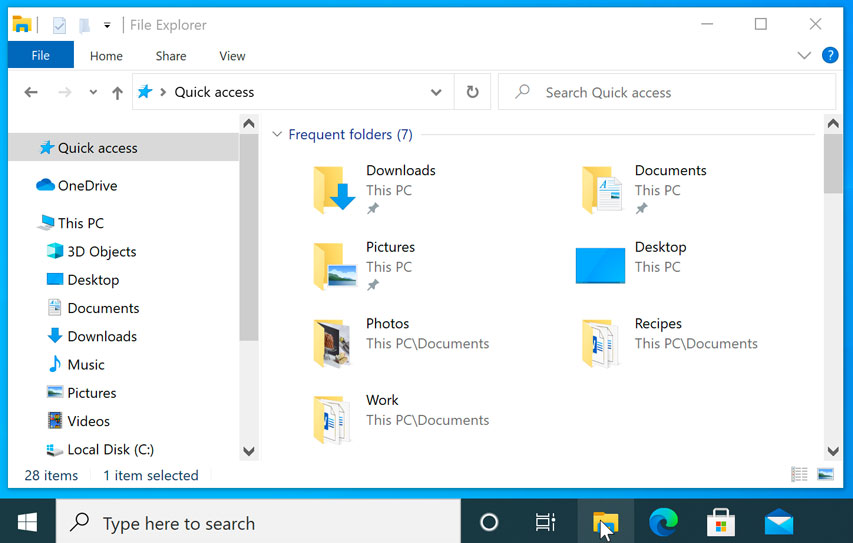
From File Explorer, double-click a folder to open up it. Y'all can then see all of the files stored in that folder.
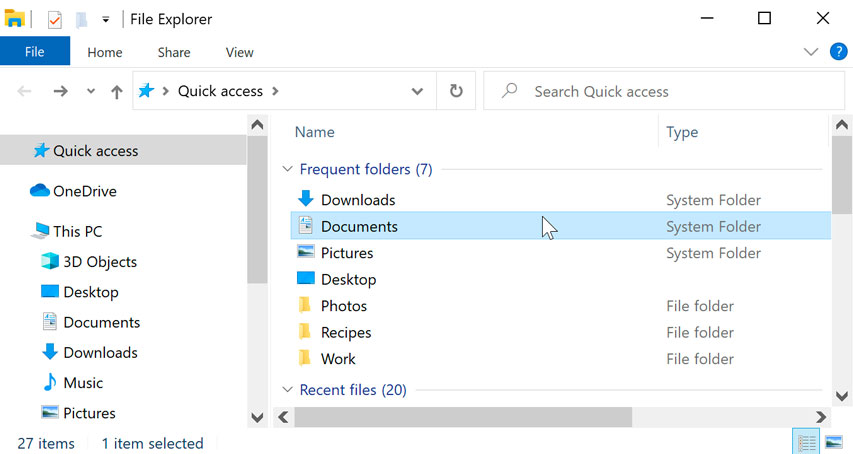
Find that you tin can besides meet the location of a folder in the address bar near the top of the window.

To open a file:
In that location are 2 principal ways to open a file:
- Find the file on your estimator and double-click it. This will open the file in its default awarding. In our example, we'll open a Microsoft Word document (Embrace Letter.docx), which will open in Microsoft Word.
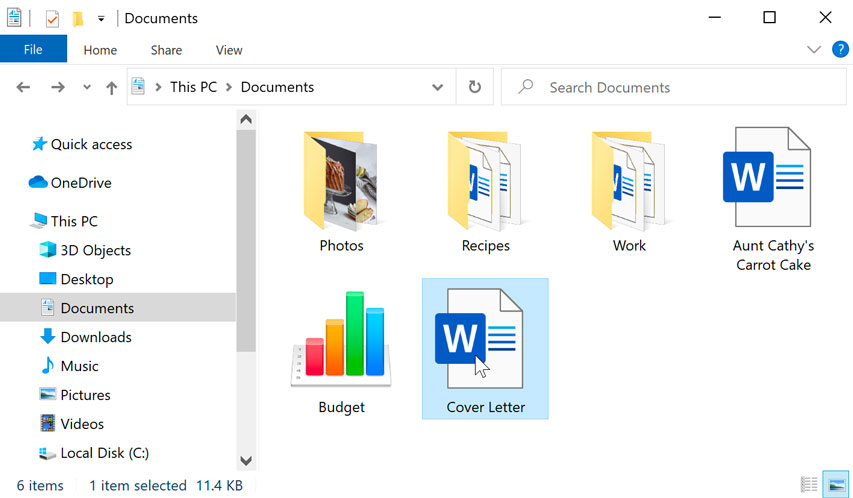
- Open the awarding, then use the application to open up the file. Once the application is open up, y'all tin go to the File menu at the top of the window and select Open up.

Moving and deleting files
As y'all begin using your computer, y'all volition start to collect more than and more files, which can make it more than difficult to find the files yous need. Fortunately, Windows allows yous to move files to different folders and delete files y'all no longer use.
To motion a file:
It'southward piece of cake to move a file from 1 location to another. For example, you might take a file on the desktop that you want to move to your Documents folder.
- Click and drag the file to the desired location.
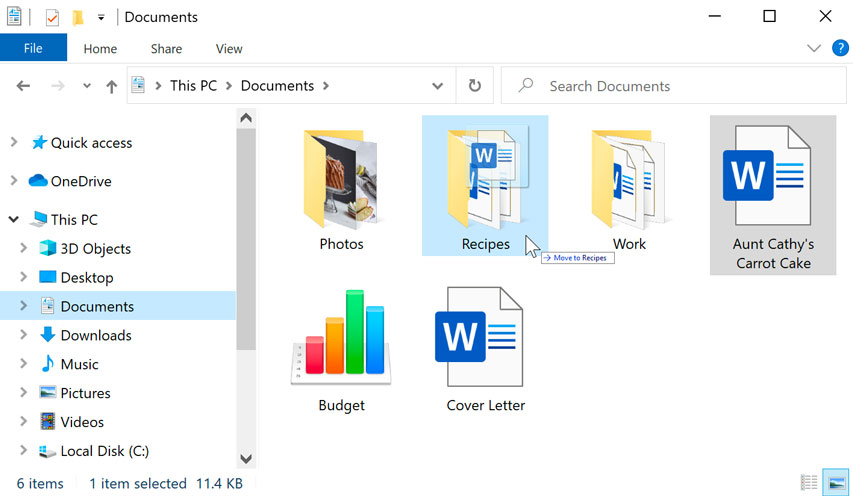
- Release the mouse. The file volition announced in the new location. In this example, we accept opened the folder to run across the file in its new location.

You lot can employ this same technique to motion an entire folder. Note that moving a folder will also move all of the files within that folder.
To create a new folder:
- Within File Explorer, locate and select the New folder button. You can likewise correct-click where you lot desire the folder to announced, so select New > Folder.
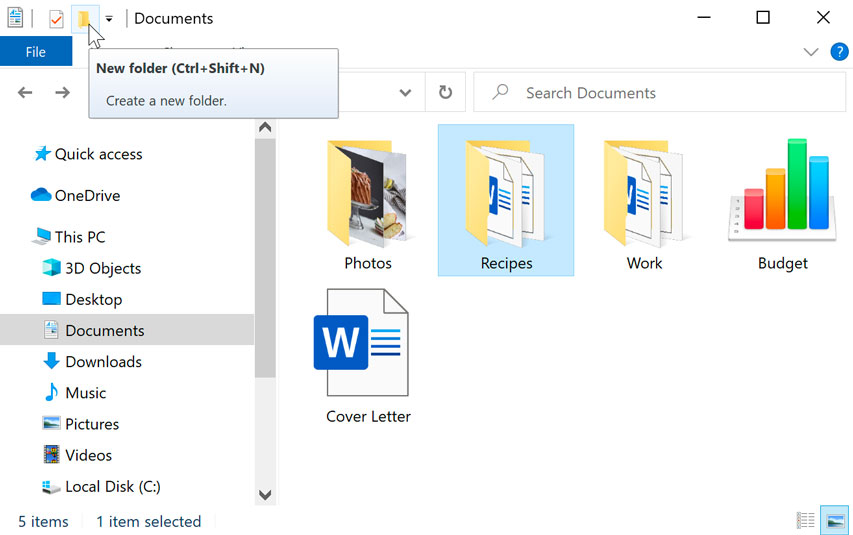
- The new binder will appear. Type the desired proper noun for the folder and press Enter. In our example, we'll call it Schoolhouse Documents.
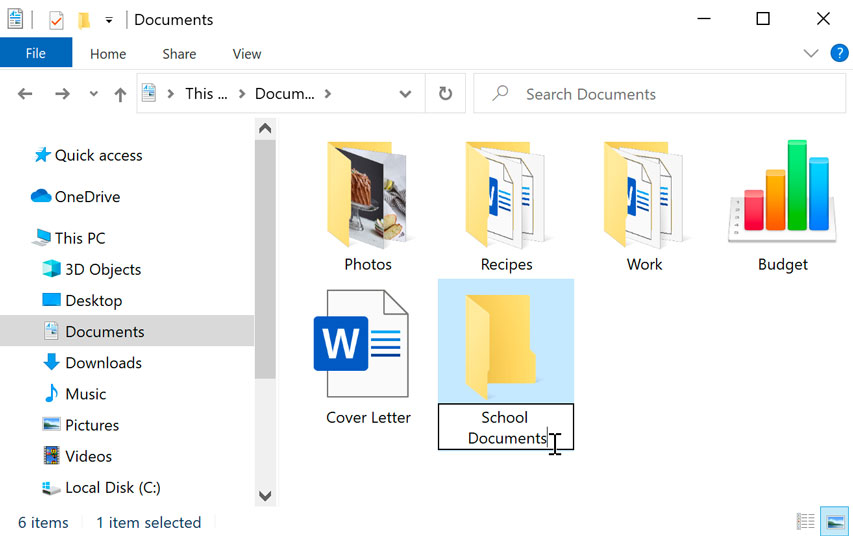
- The new folder will exist created. You tin now motion files into this binder.
To rename a file or binder:
You lot tin can modify the name of any file or folder. A unique name will make it easier to recall what blazon of information is saved in the file or folder.
- Click the file or folder, look about one 2d, and click once more. An editable text field will announced.
- Type the desired proper name on your keyboard and press Enter. The name volition be inverse.
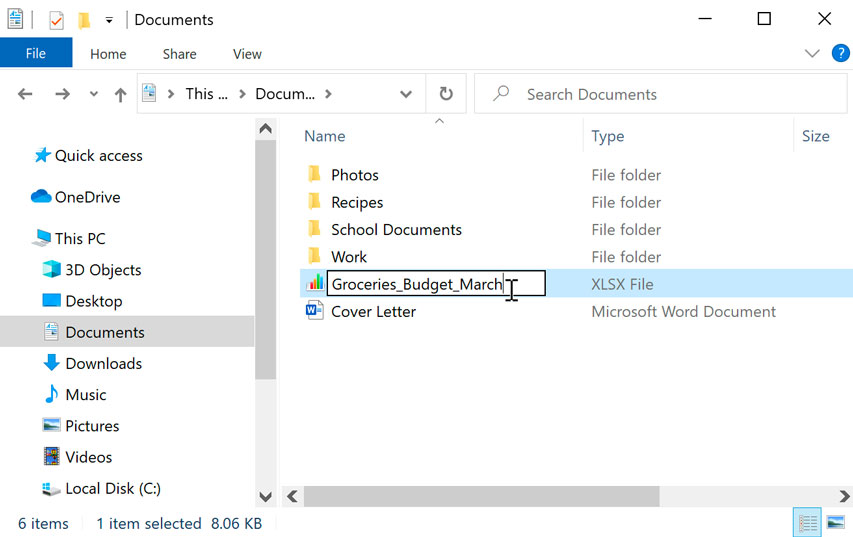
Y'all tin can also right-click the binder and select Rename from the menu that appears.
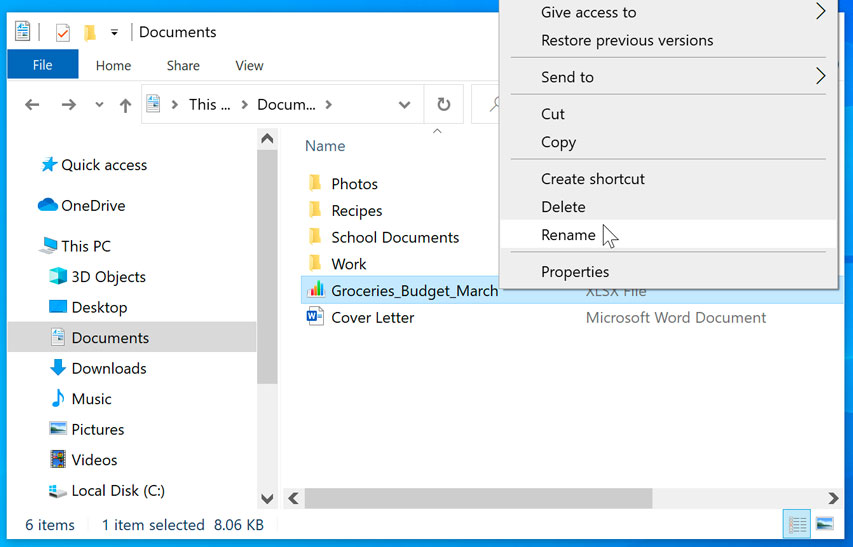
To delete a file or folder:
If yous no longer need to utilize a file, you tin delete it. When you lot delete a file, it is moved to the Recycle Bin. If you change your mind, you lot tin movement the file from the Recycle Bin back to its original location. If you're sure yous desire to permanently delete the file, you lot volition need to empty the Recycle Bin.
- Click and drag the file to the Recycle Bin icon on the desktop. You can likewise click the file to select information technology and press the Delete key on your keyboard.
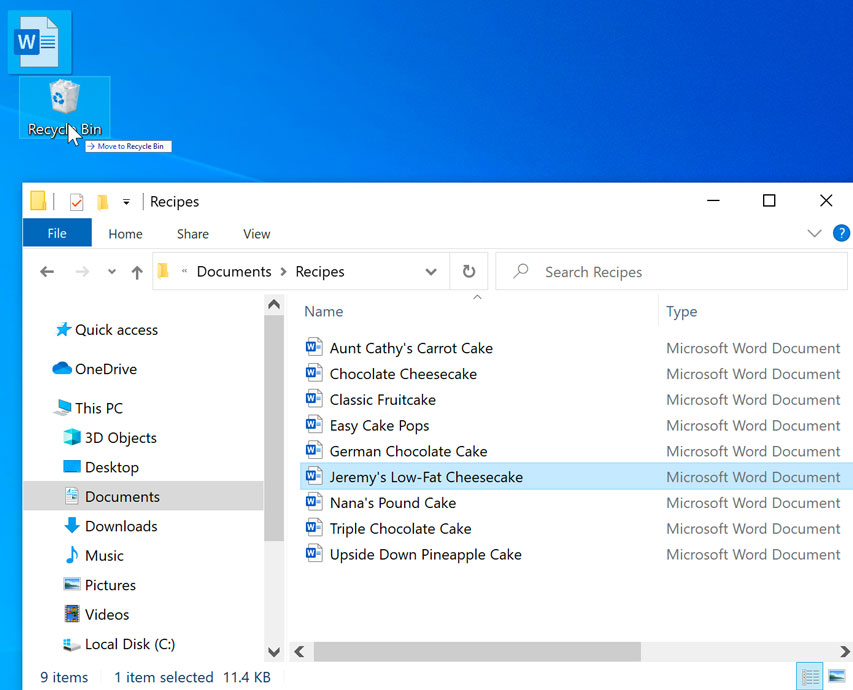
- To permanently delete the file, correct-click the Recycle Bin icon and select Empty Recycle Bin. All files in the Recycle Bin will be permanently deleted.

Annotation that deleting a folder will also delete all of the files within that folder.
Selecting multiple files
Now that you know the basics, here are a few tips to help you motility your files fifty-fifty faster.
Selecting more than ane file
There are a few ways to select more than i file at a time:
- If you're viewing your files equally icons, you lot tin click and drag the mouse to draw a box around the files y'all want to select. When y'all're done, release the mouse; the files will be selected. You can now move, copy, or delete all of these files at the same time.
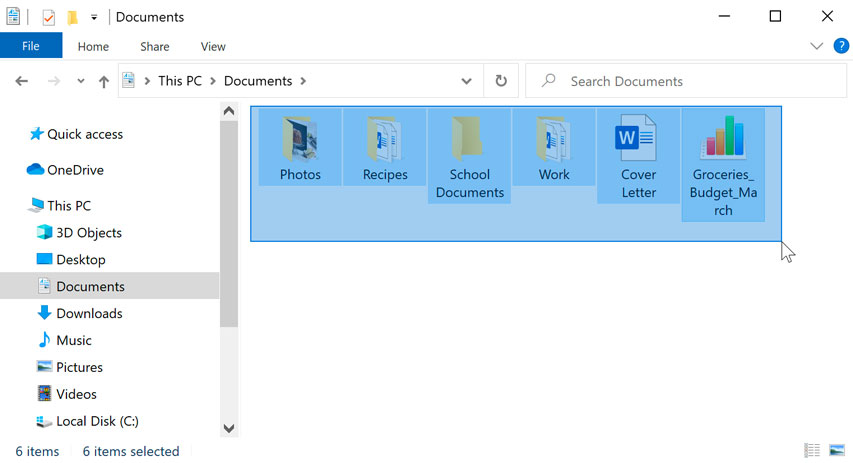
- To select specific files from a folder, press and concord the Command cardinal on your keyboard, and so click the files you desire to select.
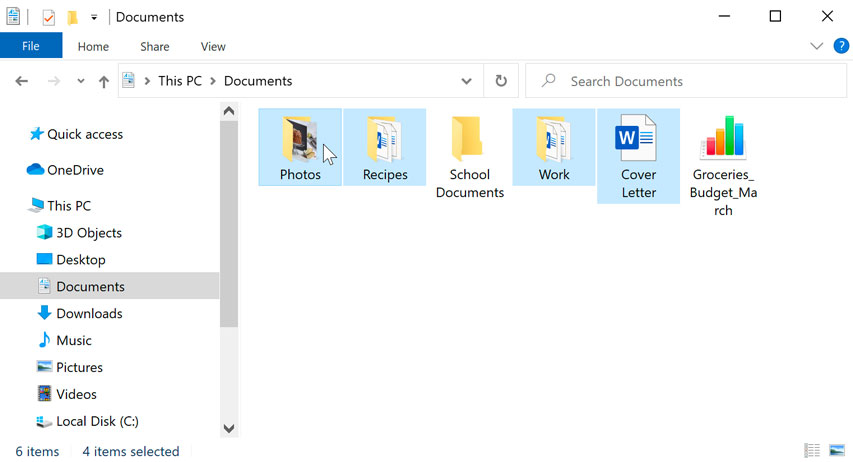
- To select a group of files from a folder, click the first file, printing and hold the Shift key on your keyboard, then click the last file. All of the files between the first and last ones will be selected.

Selecting all files
If you want to select all files in a folder at the same fourth dimension, open the folder in File Explorer and printing Ctrl+A (press and hold the Control key on your keyboard, and so printing A). All of the files in the folder will be selected.
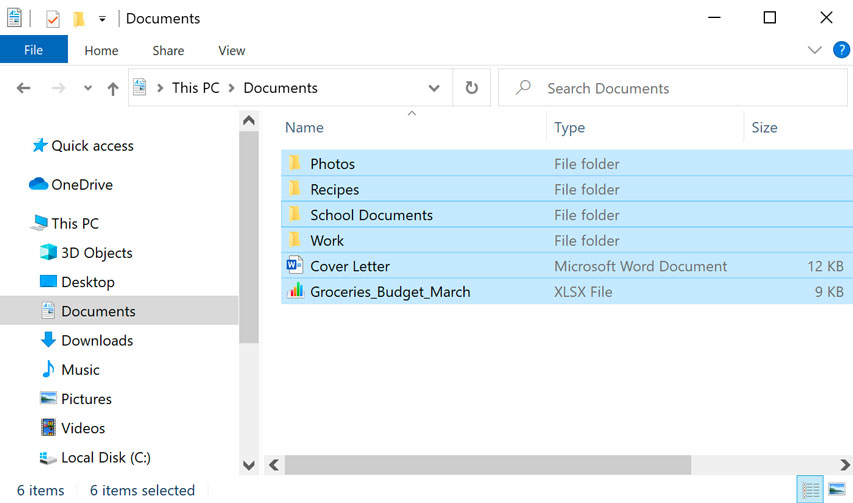
Ctrl+A is an case of a keyboard shortcut. We'll talk more about these in our lesson on Keyboard Shortcuts in Windows.
If working with files and folders feels a little tricky right now, don't worry! Similar annihilation else, working with files and folders is largely a thing of practise. You'll first to experience more than comfortable as you continue using your computer. In the adjacent lesson, we'll talk about another important concept: how to detect files on your computer that you tin't easily locate.
Shortcuts
If yous take a file or folder y'all use oft, you can save time by creating a shortcut on the desktop. Instead of navigating to the file or folder each fourth dimension you want to utilise information technology, you tin can simply double-click the shortcut to open up information technology. A shortcut will take a modest arrow in the lower-left corner of the icon.
Note that creating a shortcut does not create a duplicate copy of the folder; information technology'south simply a manner to access the folder more quickly. If you delete a shortcut, information technology volition not delete the bodily binder or the files it contains. Also note that copying a shortcut onto a flash drive will not work; if yous desire to bring a file with yous, you'll need to navigate to the actual location of the file and copy it to the flash drive.
To create a shortcut:
- Locate and correct-click the desired folder, then select Send to Desktop (create shortcut).
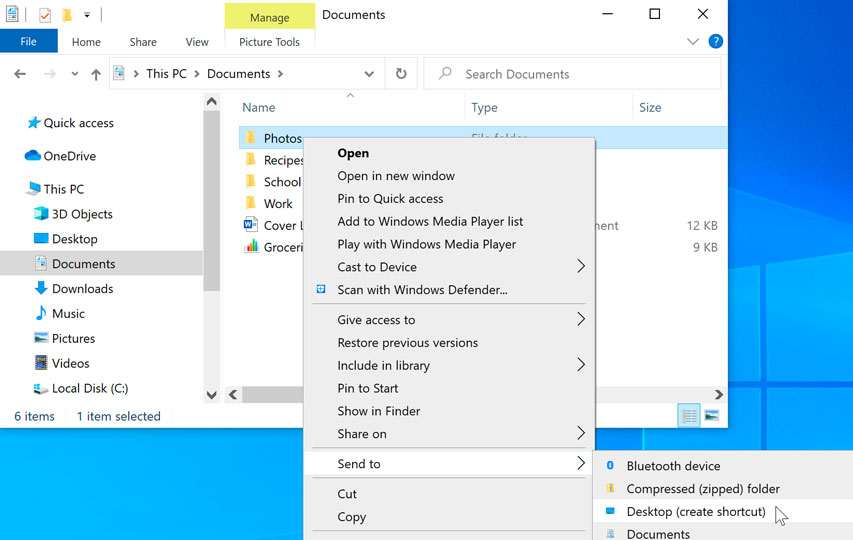
-
A shortcut to the binder will announced on the desktop. Notice the arrow in the lower-left corner of the icon. You lot tin can now double-click the shortcut to open the folder at any time.
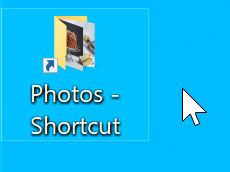
Y'all can also hold the Alt key on your keyboard, so click and drag the folder to the desktop to create a shortcut.
/en/windowsbasics/finding-files-on-your-computer/content/
Source: https://edu.gcfglobal.org/en/windowsbasics/working-with-files/1/
Posted by: lindseysamot1957.blogspot.com

0 Response to "How To Open Documents On Windows 10"
Post a Comment